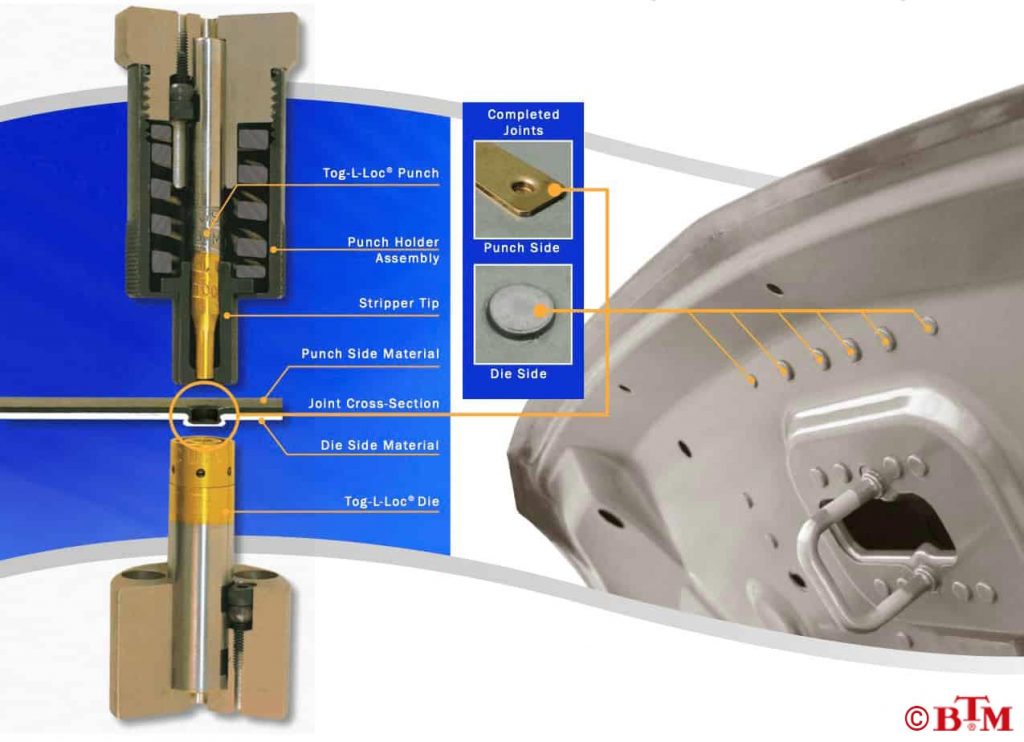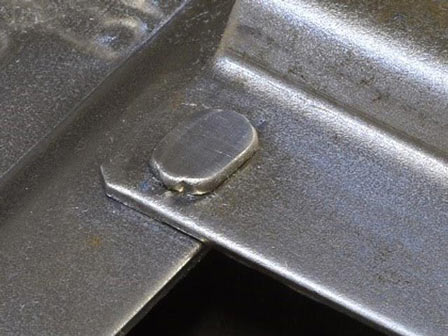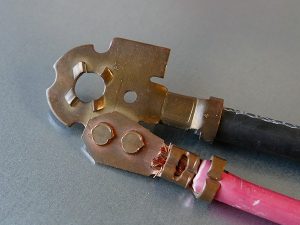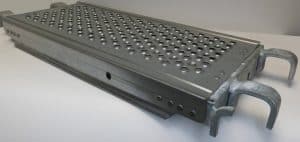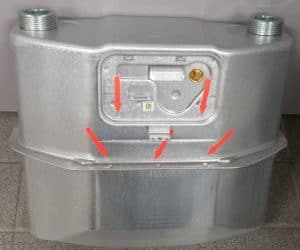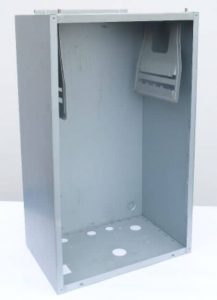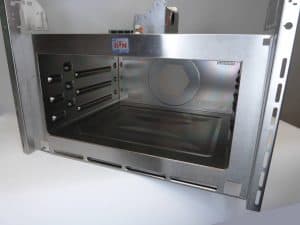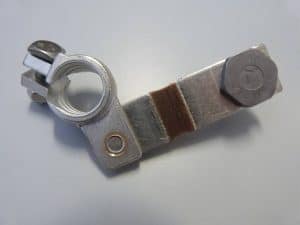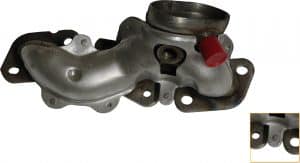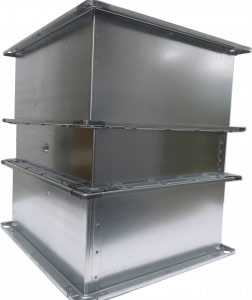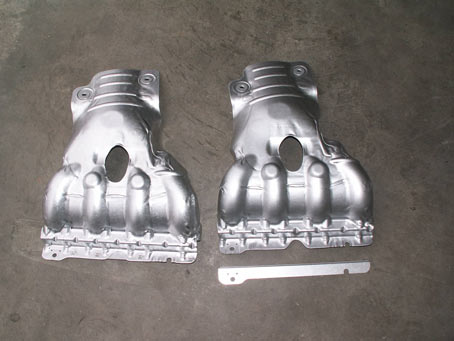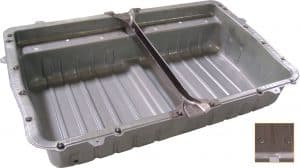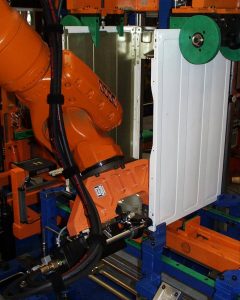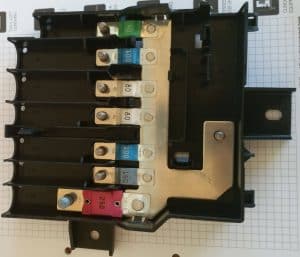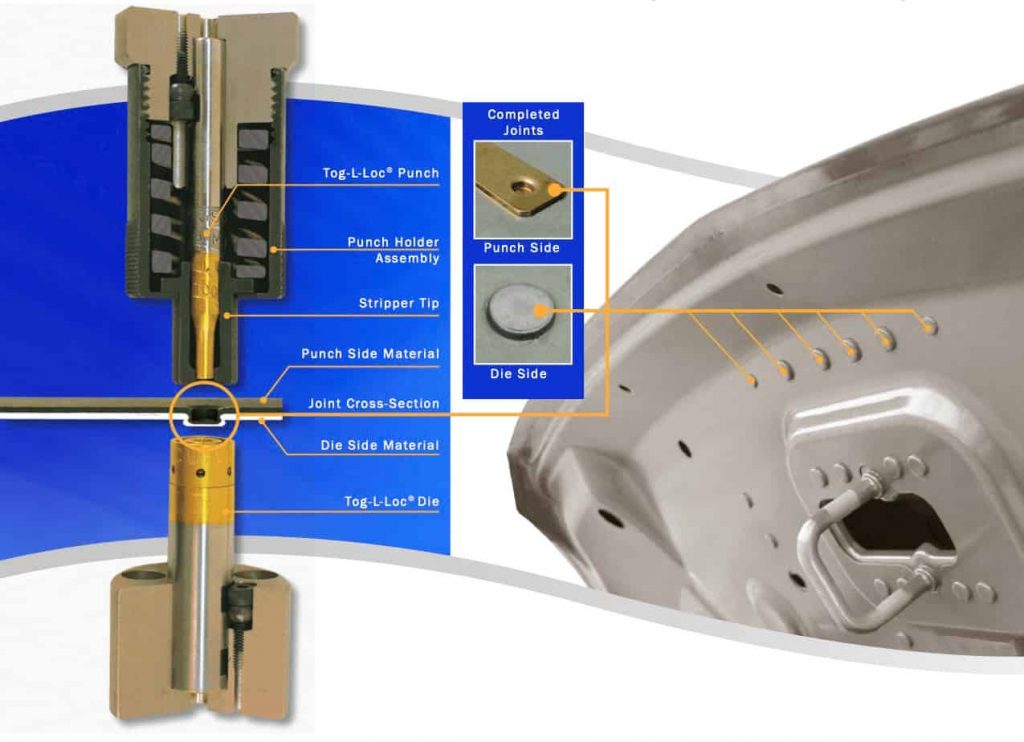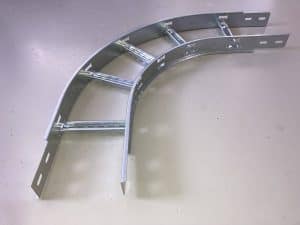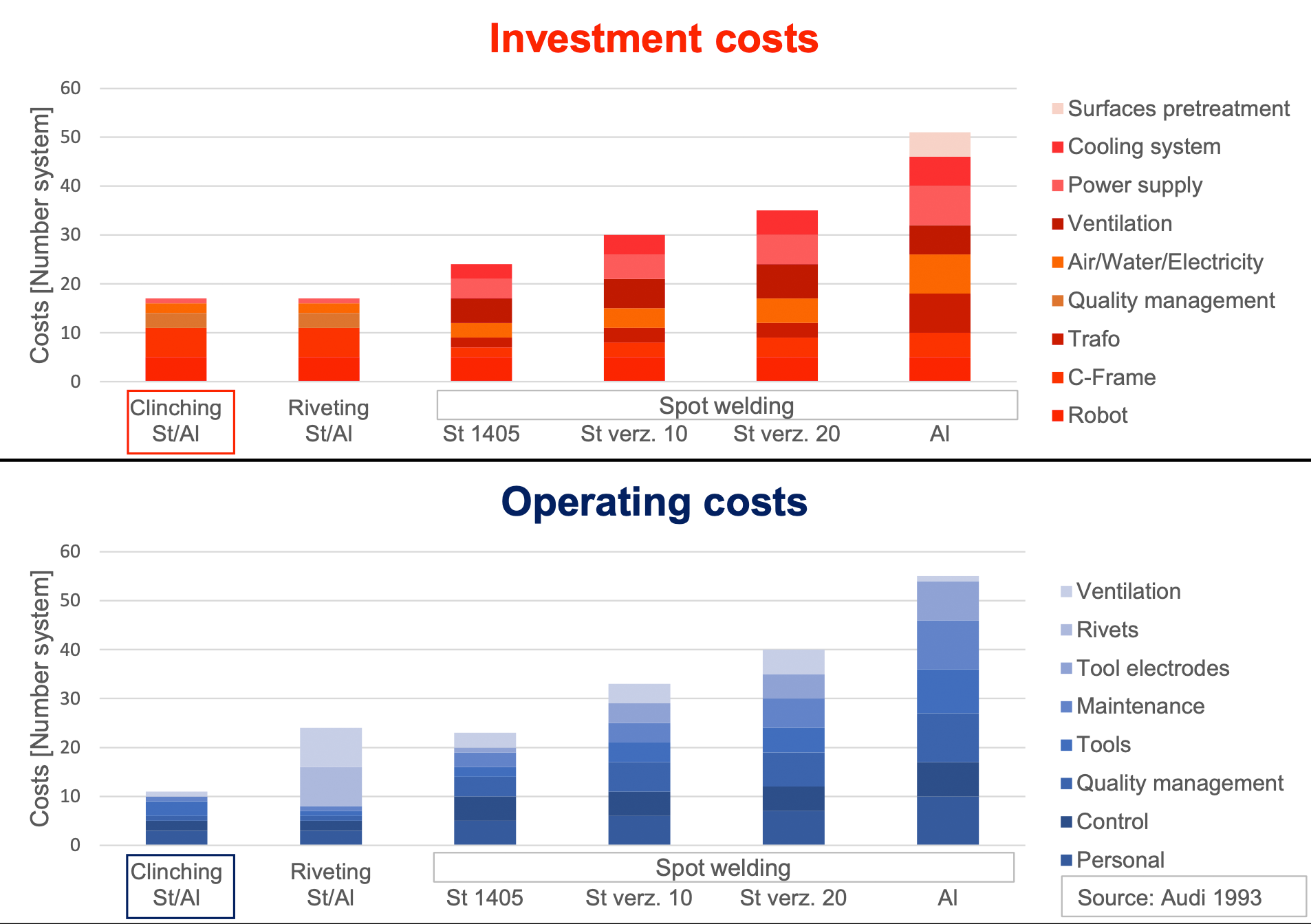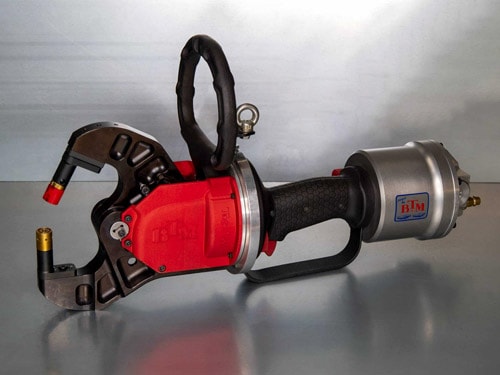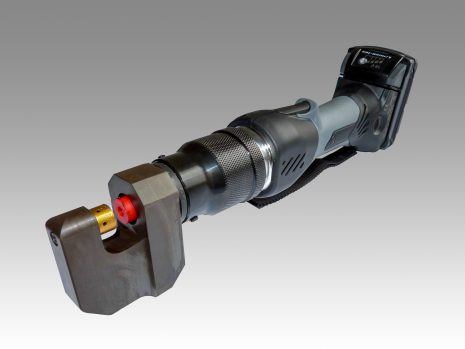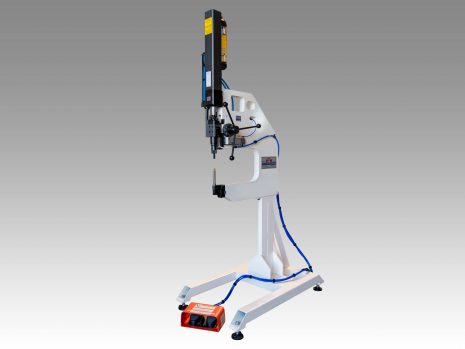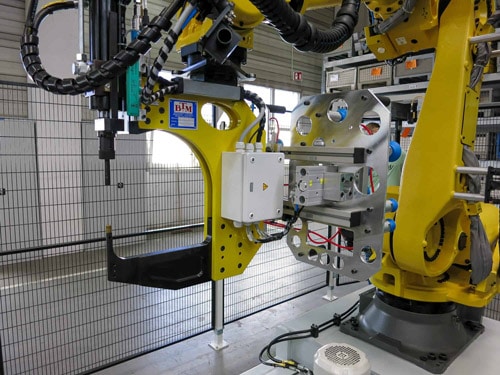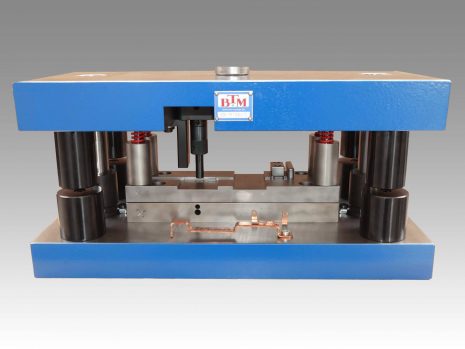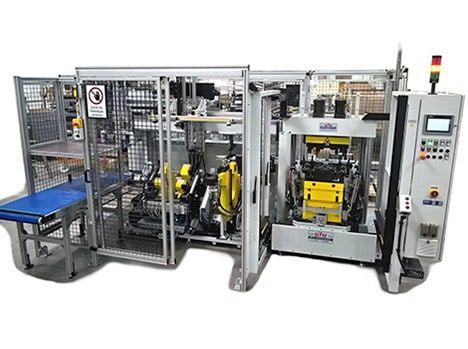Clinching Systems by BTM
Clinching connects metal sheets and profiles of different materials, thickness, ductility and sizes. This reliable and economical process produces stable connections that can withstand high static forces and dynamic stresses. Insensitive to variations in sheet thickness and surface coatings, along with the possibility of connecting dry or oiled sheetmetal and this at low costs, these are the special features of BTM clinching systems.
Compared to other joining methods such as spot welding, riveting, screwing or adhesives, it also represents an attractive, cost-effective solution.
CLINCHING: CREATING DIMENSIONALLY STABLE JOINTS
Which clinching point geometry (round or rectangular) is most suitable for a specific application depends not only on the material, but also on what the joint is supposed to achieve. Does it have a high resistance to torsion? Or does electrical conductivity also have to be ensured with coated surfaces? BTM provides the right solution for every case.
We determine which clinching system best suits your requirements together in a close exchange. BTM Europe implements a large number of systems for a wide range of applications. Find out more here, in our news or contact us for a direct and personal advice!
Where do you want to go?
OUR RANGE IN THE AREA OF CLINCHING
- Extensive range of mobile and stationary units, also for automated operation and robot use
- Individual manufacturing of clinching pliers, clinching frames, clinching units, clinching fixtures and clinching systems
- Feasibility studies, trials and sampling
- Project planning, concept development, design and production
- Competent advice and short response times
- On-site service (e.g. accompanied commissioning)
- After-sales service (e.g. training, online maintenance, process optimization)
- Tool concept with many variants
HOW DOES CLINCHING WORK?
Clinching is a mechanical joining process in which sheet metals, also of different thicknesses or materials, also with adhesive or other intermediate layers, are joined in a cold forming process.
In terms of process technology, two or more sheet metal layers (joining partners) are positively interlocked with each other by a process combination of deep-drawing and squeezing or embossing. As an economical joining process, clinching is used to join sheet metals of different materials (e.g. steel and aluminum), ductilities and coatings. Clinching is the optimal joining system especially for coated or galvanized surfaces. Here, the materials can be joined together even without a current flow – as it is required for spot welding.
The application range for clinching extends from individual sheet metal thicknesses from t=0.10mm up to a total sheet thickness of approx. t=10mm.
CLINCHING EXPLAINED IN DETAIL
Using the patented BTM Tog-L-Loc® clinching process as an example, the sequence of a non-cutting clinching process for the creation of round and oval points with movable die parts can be simplified into the following process steps:
- Clamping: The punch-side stripper is placed on the sheet layer, both sheet layers are thus clamped between the stripper (punch holder) and the die.
- Deep drawing: The punch penetrates the material and pulls (presses) the sheet metal combination into the die opening. The blades of the Tog-L-Loc® clinching tool remain closed during this process.
- Locking: As soon as the material hits the bottom of the die (“anvil”), the main flow direction changes: As the punch continues to penetrate, radial expansion now takes place. The movable blades open and make room for the (spreading) die side embossment (“button”).


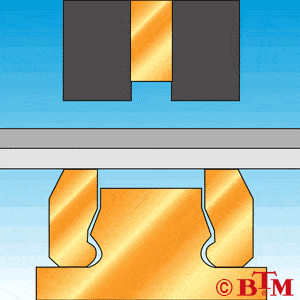
CLINCHING IS EASY ON YOUR WALLET
- No thermal influence on the joint
- Joining of different materials in different thicknesses possible
- Flexibility with regards to joining direction
- Combination of different material-thickness-combinations with one tool set
- Suitable for hybrid joining (clinching in combination with adhesive bonding)
- No pre-treatment of the part surface necessary
- Joining of materials with different surface coatings
- No pre-treatment or reworking of the joint
- Insensitive to joining part thickness variations
- Very good electrical conductivity in the joining area
- Quality control through non-destructive testing and online process monitoring
- Austenitic, stainless steels can be joined economically
CLINCHING POINT GEOMETRY
Which clinching point is suitable for my application?
Basically, clinching systems can be classified according to the geometry of the point formation or according to the production of this point. The best-known and most commonly used point is the round point. One or more round points can be set in a tool and form the group of the non-cutting systems. The point formation can be created with tools in a fixed die or with movable blades. BTM has both systems in its range.
In addition to the non-cutting systems, the cutting systems show their advantages with brittle-hard materials such as stainless or spring steel or with more than two-layer joints. The potential of the cutting systems is also shown by the anti-rotate lock and the desired metallic contact with coated joining partners concerning electrical grounding.
The group of Geo-Clinch® tools includes cutting and non-cutting systems. With Geo-Clinch® systems a clear fixation of the joining partners in two axes is given by setting only one (!) clinching point.
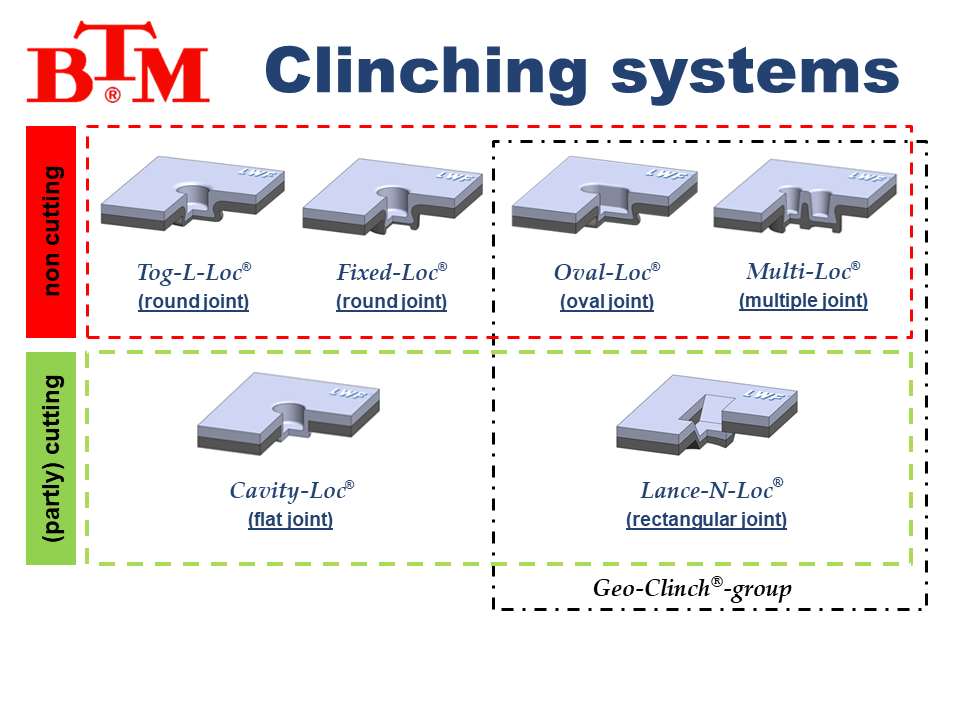
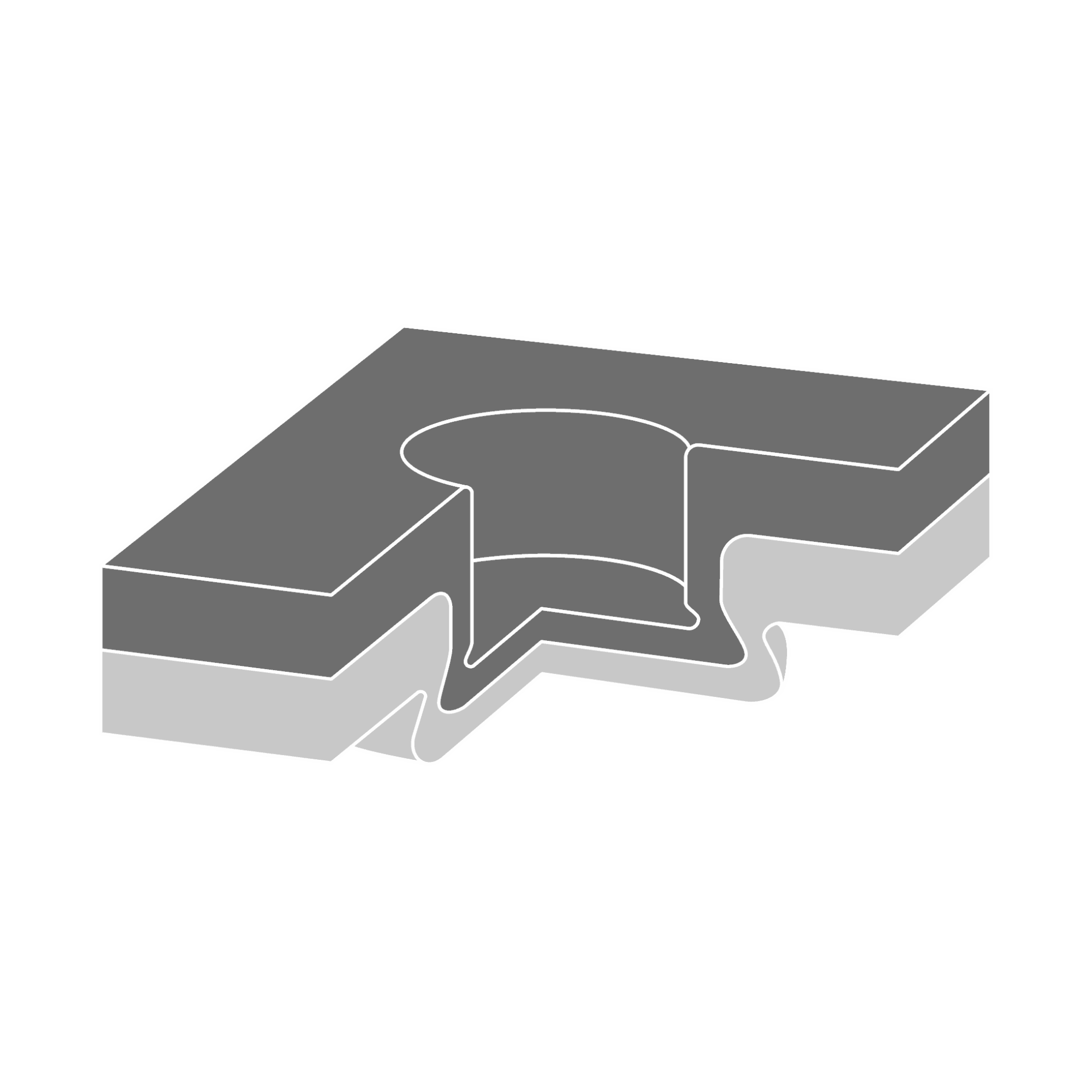
Round point (Tog-L-Loc®)
The round Tog-L-Loc® clinching point is the best-known clinching system on the market. The round points are produced by cold forming and connect sheet metals and/or profiles of different material types and thicknesses. Initially with two movable blades, then later as the first manufacturer worldwide in a 3-part design, BTM was a pioneer of modern clinching technology.
The Tog-L-Loc® round point from BTM is characterized by its non-cutting joining process. The joining partners are locked together circularly, i.e. over 360°. The round point is equally firm in the plane in all directions and both sheet levels – punch and die side – remain tight.
In a second step after clinching, Tog-L-Loc® round points can also be flattened to create two flat sheet/partner layers.
- non-cutting
- gas-tight
- liquid-tight
- high strength
- very good electrical conductivity
Round point in fixed die (Fixed-Loc®)
Another round clinching point is the Fixed-Loc®. This clinching point, produced in a fixed die, is characterized by its slim design. A relatively large clinching point can be set with a Fixed-Loc® clinching tool, especially in confined spaces. Stainless steels as well as combinations of different material types and thicknesses can also be clinched together with the Fixed-Loc®.
Like the Tog-L-Loc® round point, the Fixed-Loc® round point from BTM is characterized by its non-cutting joining process. The joining partners are locked together circularly, i.e. over 360°, with friction locking and form fit. The Fixed-Loc round point is equally firm in the plane in all directions and both sheet metal planes – punch and die side – remain tight in the point.
- non-cutting
- gas- and liquid-tight
- for narrow channels and narrow flanges
- very good electrical conductivity
- for connections with brittle-hard materials
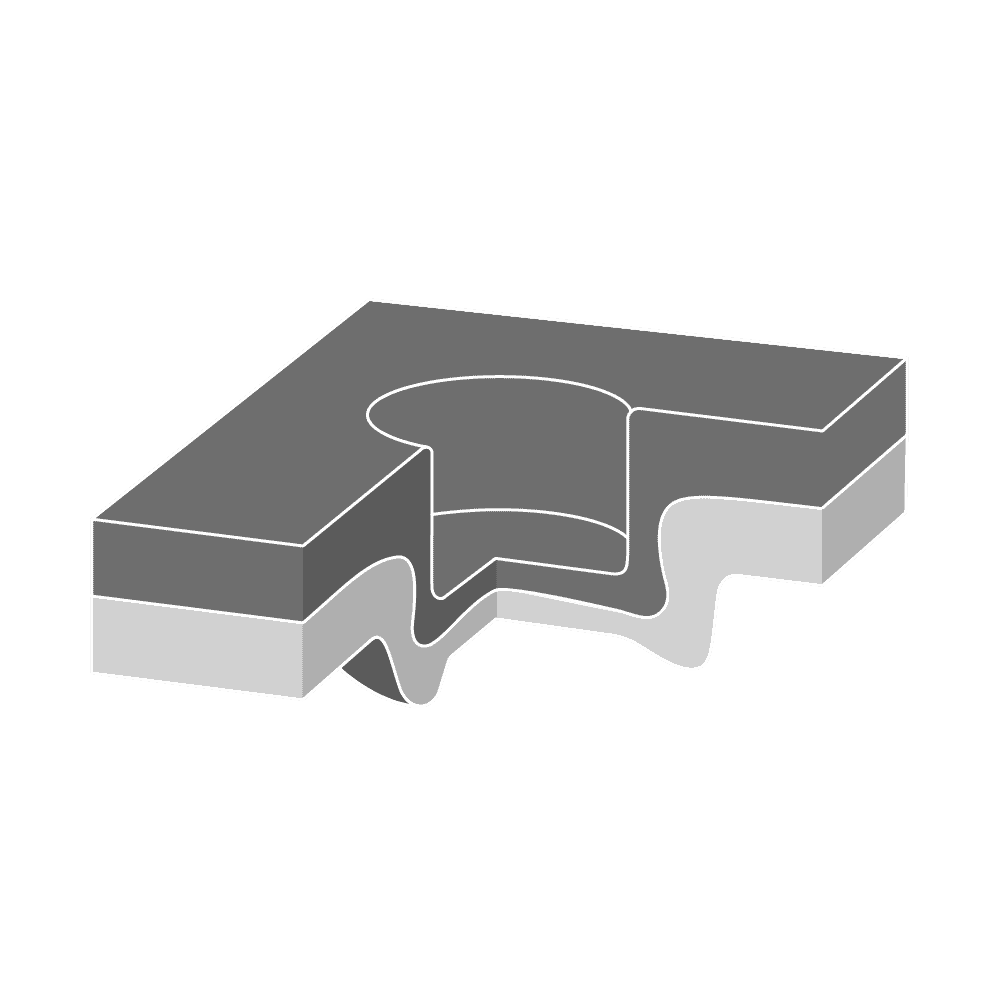
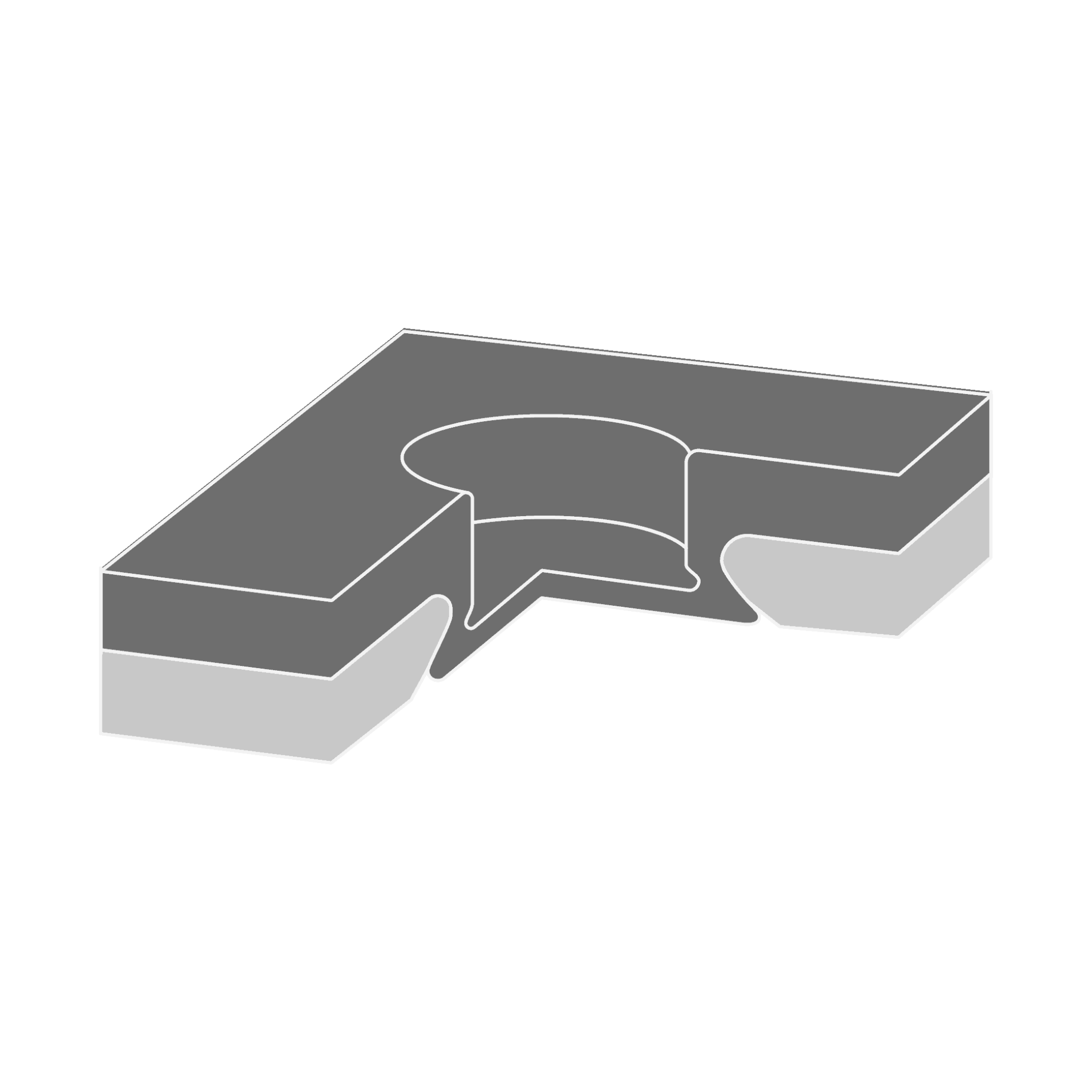
Clinching with pilot hole (Cavity-Loc®)
Materials that have only a low ductility, i.e. are difficult to form, as well as joining partners with very different thicknesses can be joined with the Cavity-Loc® clinching tool. This applies to spring steels as well as brittle aluminum and copper alloys. The Cavity-Loc® is also the solution par excellence where a flat surface or only a low button height is required. The pilot-holed die-side layer is picked up by means of a centering punch and filled with the deformable punch-side material and caulked therein.
- for joints between ductile and brittle materials
- for surfaces that are as even as possible
- for joining partners with very different thicknesses
- for joining spring steels
- gas-tight
- liquid-tight
- good electrical conductivity
The BTM GEO-Clinch®-systems
High resistance to torsion, cutting as well as non-cutting connections and excellent electrical conductivity characterize the joints created by clinching of the BTM GEO-Clinch® systems. These systems, designed for geometry points, are particularly suitable for use in GEO stations in the automotive industry.
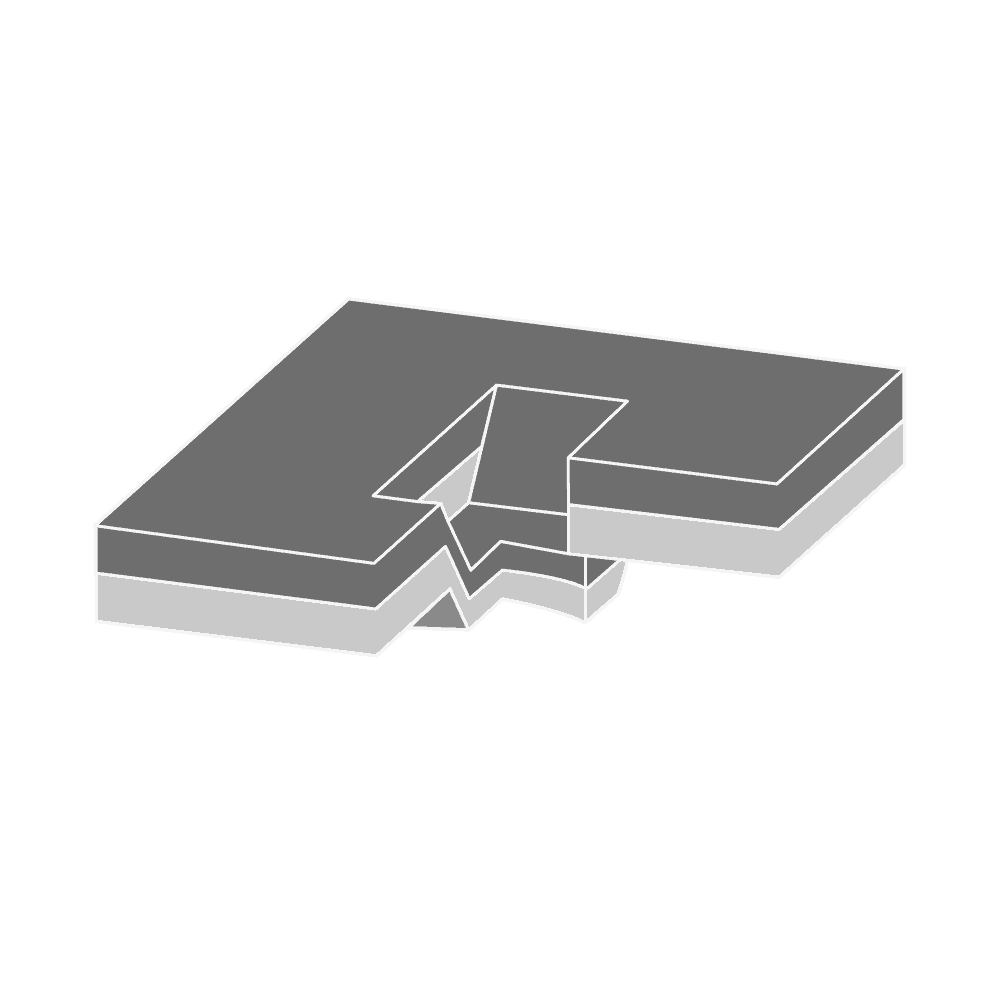
Rectangular point (Lance-N-Loc®)
With the BTM Lance-N-Loc® rectangular point, several layers of joining partners can be joined by clinching in addition to two layers. The material layers are partially cut locally and interlocked with each other. The rectangular point is also suitable, for example, for joints with non-metallic partners such as glass fibre fabrics and plastics. But also stainless steel joints such as stainless austenitic steels can be securely joined with the Lance-N-Loc®. In the case of coated sheets, a secure electrical connection is created by the cutting component. Especially in white goods, the Lance-N-Loc® is therefore also called the “electrical grounding point”. In addition, the rectangular point offers a high resistance to torsion, even where only one clinch point can be set for reasons of space.
- cutting, partial cutting
- suitable for multiple layers
- suitable for combinations with non-metallic partners
- good for thin-in-thick combinations
- suitable for stainless steel
- very good electrical conductivity ("grounding point")
- protected against torsion
- GEO-Clinch® system
Clinching with oval point (Oval-Loc®)
The Oval-Loc® oval point offers a high torsion-resistant connection without a cutting component, which can be used as an alternative to the rectangular or multiple point. As a part of the GEO-Clinch® family, the Oval-Loc® is particularly suitable for the automotive industry where multiple components are pre-fixed in GEO stations. With only one BTM Oval-Loc®Clinch, two components can be connected to each other tightly, corrosion-proof but at the same time with a high resistance to torsion. It is characterized by its compact, space-saving design and offers an excellent alternative to the usual two- and multi-point solutions.
- Alternative to multiple round pointsn Rundpunkten
- non-cutting
- gas-tight
- high torsional moment – high resistance to torsion
- very good electrical conductivity
- space-saving (compared to multiple points)
- GEO-Clinch® system
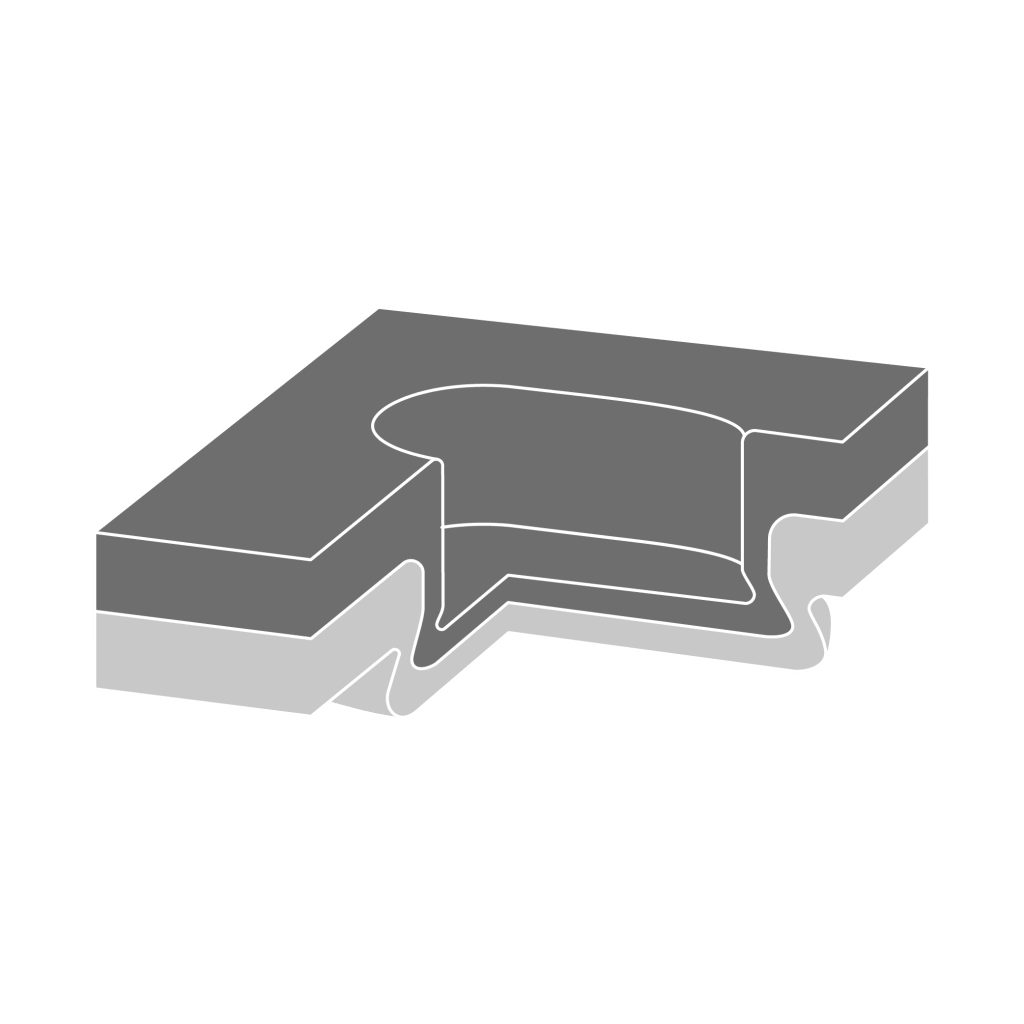
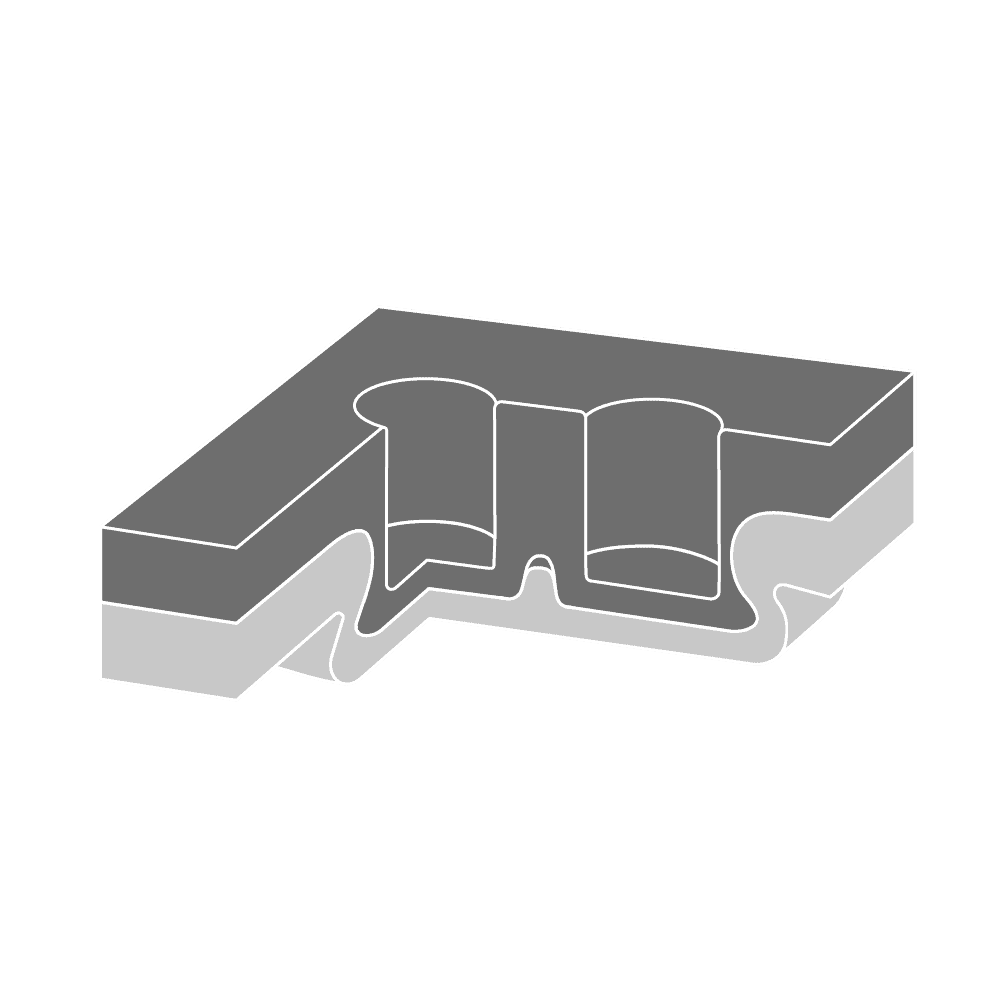
Multiple points (Multi-Loc®)
The BTM Multi-Loc® clinching system combines several Tog-L-Loc® round points in one tool. This makes it possible to implement connections with very high resistance to torsion and without a cutting component.
The BTM Multi-Loc® Clinch represents a customer-specific special form and is the precursor of the Oval-Loc® oval point.
As an alternative to the oval point, the multiple point can be used to create a resistance to torsion over a larger area.
- non-cutting
- gas-tight
- twist-proof
- very good electrical conductivity
- GEO-Clinch® system
BTM CLINCHING PRODUCTS
At BTM you will find a wide range of products, from standard parts and clinching tools to fully automatic production lines. Our extensive portfolio covers all areas that are used in clinching.
Besides the tools, these are hand-guided clinching pliers, robot-guided clinching pliers and machine clinching pliers. Furthermore, C-frames can be configured as a stand model or table model. Pneumatic, hydraulic or servo-electric spindle drives are used.
For installation in your press, we supply you with simple drive-free single-point frames or multi-column guided complete tools, which are designed for plug’n’play operation with preset clinching tools, ejectors and strippers, as well as overrun stops.
BTM CLINCHING SOLUTIONS
Standard solutions
BTM offers a wide range of standard solutions for the most diverse areas of application in trade and industry. From mobile clinching pliers and stationary clinching machines to machine and robot pliers, BTM offers a very wide range of options for the most diverse tasks and applications. BTM has many types of drives available for the clinching pliers. Purely pneumatic, pneumo-hydraulic, hydraulic, electro-hydraulic or servo drives are included in the BTM range. And if a standard solution is not the right one, a standard clinching plier can often be turned into a customized solution by making small adjustments due to its modular design. A standard solution becomes a variant.
Simple, uncomplicated and cost-effective!
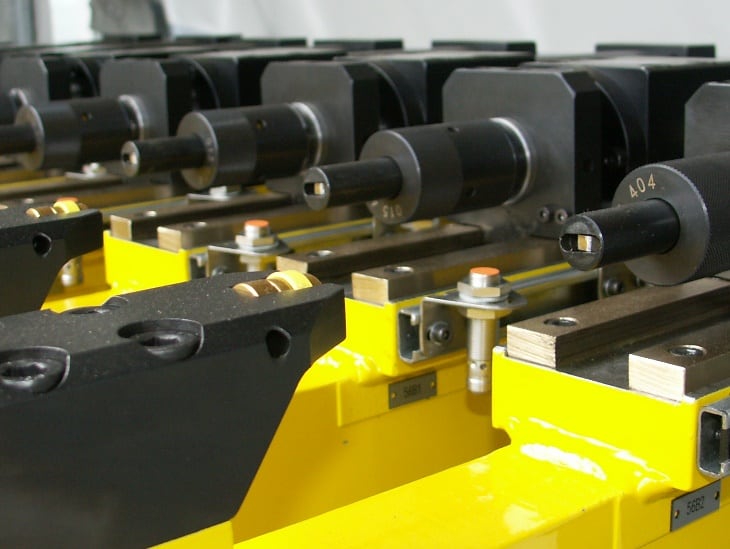
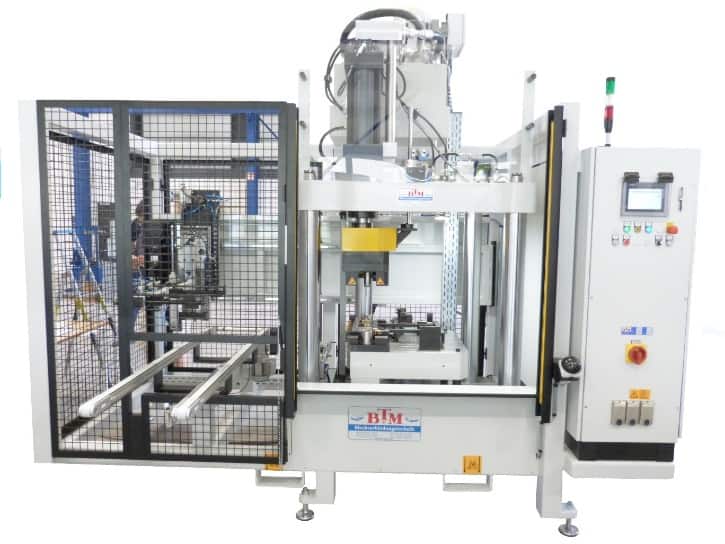
Special machines
From simple manual clinching pliers to fully automatic clinching systems, BTM offers you customized solutions in addition to the standard variants. From the initial concept, the design, the manufacture of the individual parts, the assembly of the clinching machines and clinching pliers, the preparation of the electrical, pneumatic and hydraulic plans, the programming of the control system and the commissioning, you get everything from a single source. All this is done in close cooperation with you, the customer, in order to fulfil your ideas in the best possible way. Furthermore, we provide training for your employees as well as maintenance and repair work. The complete after-sales service is a matter of course for us. We focus on a long-term cooperation with our customers. Therefore, the satisfaction of our customers with us and with the quality of our products is the first priority of our company guidelines.
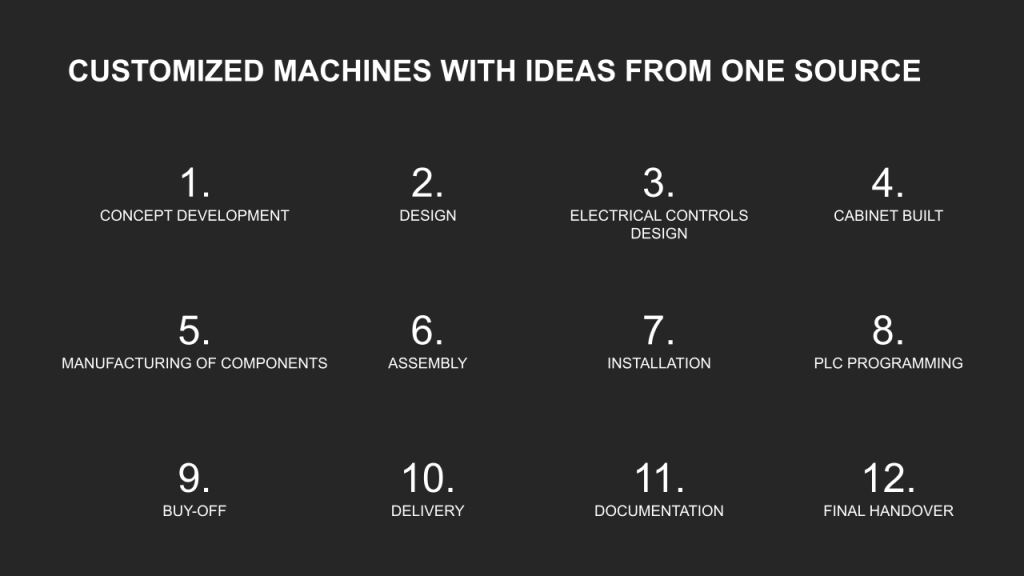
Free feasibility analysis
Every application is individual, so a solution must always be found individually.
For the production of initial prototypes and for feasibility studies, we have modern laboratories and various sampling systems at both of our locations. With the help of various stationary C-frame systems as well as different hand-held clinching pliers, we are always in a position to join your application according to the drawing. In addition, we offer strength tests and micrograph analyses.
Send us your components or sheet metals which you have intended for your application. We will also be happy to carry out the tests in cooperation with you. Following the sampling, we can offer you the best possible solution to safely connect your application by clinching.
This is what we can do for you
- We advise you to find a perfect solution
- Our experienced staff can contribute constructive modification suggestions
- In addition to hand-held clamps, we also have hydraulic clinching clamps as well as modern servo-motorized presses to carry out tests for you.
- Analysis through the creation and evaluation of macroscopic micrographs with measurement of the joining parameters.
- Material testing by means of hardness testing
- Tensile tests according to DIN ISO standards but also according to customer-specific requirements
- On request, larger quantities of prototypes or small series can also be manufactured
- Consultation, test report, tool passport
- Proof of feasibility
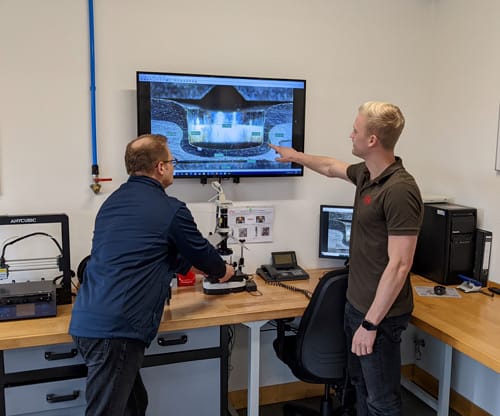
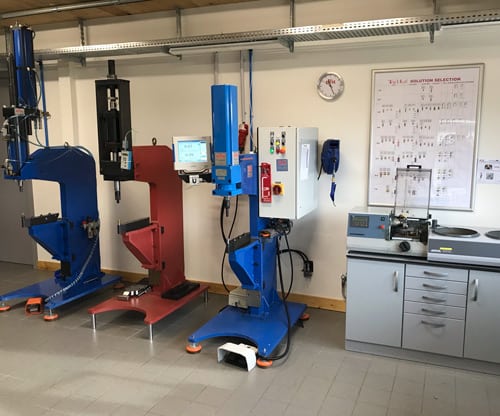
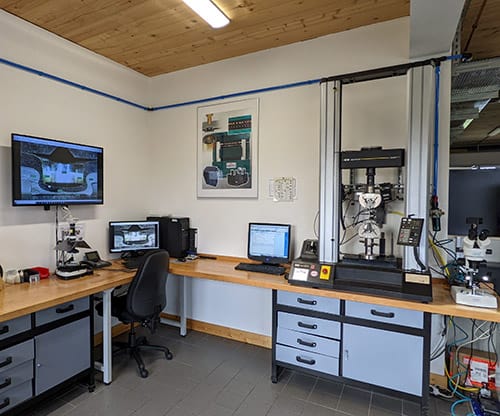
BTM Customer base
Our machines are used in over 40 countries


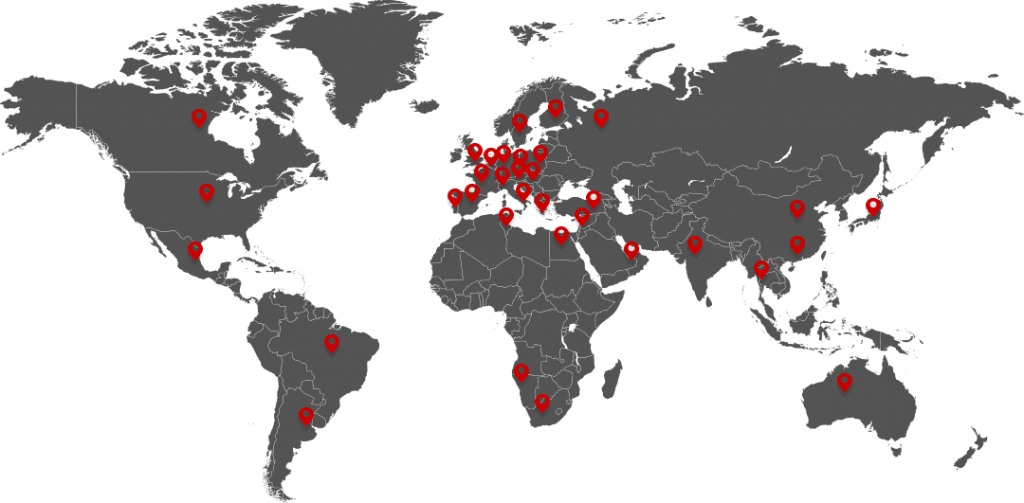
What our customers say

VIESSMANN WERKE ALLENDORF GMBH
“Viessmann uses BTM clinching and screw insertion machines as well as manual and column pliers in the housing production of gas boilers. The great flexibility of the BTM machines allows us to efficiently produce the high number of variants demanded by the market with minimal set-up time.””
Ulrich Faust // Team Leader Industrial Engineering

MIELE & CIE. KG
“Miele products are renowned for their high quality. In order to achieve this level, we need production machines that also produce outstanding products.
That is why we use BTM machines, as they meet our requirements in the best possible way. In addition, BTM machines stand out for their sophisticated and innovative concepts.”
Reinhild Portmann // Executive Vice President Corporate Communications and Deputy Head of Press and Public Relations
FAQs zum Clinchen
Clinching is a mechanical joining process in which two or more overlapping parts are joined to each other without the need for any auxiliary joining parts.
Metals of the same type, but also in particular of different types (e.g. steel-aluminum) are suitable for clinching. Furthermore, clinching of organic materials such as (fibre-reinforced) plastics is possible under certain conditions.
Low energy costs, as well as running production costs, no use of rivets or welding filler material, plus no pre- and post-processing of the components required.
With clinching, coated, different types of material and different thicknesses can be joined. Neither toxic fumes nor structural changes occur in the weld zone. Dynamic strengths are higher than those of spot-welded joints.
No pre-treatment of the joining part surface required, no curing time required, no development of toxic vapors and fumes.
No pre-holing required for pop rivets, no auxiliary joining parts and the necessary feeding technology.
Clinching joints are non-detachable, which means that to detach the joint, it must be destroyed, for example, by drilling. In addition, clinching joints always require accessibility from both sides in order to absorb the process forces and to be able to create a joint at all.
The joining parts must be arranged with a minimum amount of overlap - depending on the tools used. In addition, the joining parts must have a certain degree of formability. Furthermore, two-sided accessibility is required.
Yes!
No thermal influence on the joint.
The force is transmitted via force locking and form-fit of the joining partner on the punch side in the partner on the die side.
Yes, clinching with a pre-hole, e.g. with the BTM Cavity-Loc®, is possible.
Yes, metals and non-metals or organic materials such as plastics can also be joined together.
The holding forces are created by the force locking and form-fit of the punch-side joining partner in the die-side one.
Yes!
No, because the zinc layer and thus the corrosion protection is usually retained during clinching. No post-treatment is necessary.
Yes, the joining forces are significantly greater than with conventional steels.
Yes. The effects of surface enlargement and relative movement of the parts to be joined that occur during clinching lead to the formation of micro-contacts through material closure, which ensure excellent electrical conductivity. Clinching points serve as electrical grounding points for coated sheets.
Yes, the cycle time can be reduced considerably.
Yes, but it must be ensured that the individual processing steps do not negatively influence each other.
Yes, clinching can be combined with the usual machining steps without any problems.
Yes, clinching can be automated under presses as well as in production lines or robot-guided tongs.
It can be checked by means of non-destructive testing (process monitoring, visual and metrological observation) or destructive testing (macro-section, tensile tests).
Yes. PM is a non-destructive test. The clinching process is monitored by means of force and path recording of the clinching process.
While the joining forces in the thin sheet area are approx. 15-30kN, forces of 200-250kN can occur with sheets up to 8 mm.
Yes, but this depends on the thicknesses and strengths of the parts to be joined. With the opening die concept Tog-L-Loc® it is even possible to realize joints without changing the anvil depth.
Yes, mainly by using the Lance-N-Loc® tool, but also with the non-cutting BTM systems, it is possible to clinch more than two layers as well as thin in thick pairings.
Clinching tools can be installed in press frames, in hand-held C-frame and scissor-frame constructions or in machine or robot frames.

BTM EUROPE
Blechverbindungstechnik GmbH
Office North
Handwerkerstr. 6
D-59597 Erwitte
TEL +49 2943 9790-0
FAX +49 2943 9790-90
MAIL info@btm-europe.de
Office South
Am Fuchsgraben 13
D-77880 Sasbach / Ortenau
TEL +49 7841 68136-0
FAX +49 7841 68136-25
MAIL info@btm-europe.de

BTM EUROPE
Blechverbindungstechnik GmbH
Niederlassung Nord
Handwerkerstr. 6
D-59597 Erwitte
TEL +49 2943 9790-0
FAX +49 2943 9790-90
MAIL info@btm-europe.de
Niederlassung Süd
Am Fuchsgraben 13
D-77880 Sasbach / Ortenau
TEL +49 7841 68136-0
FAX +49 7841 68136-25
MAIL info@btm-europe.de

